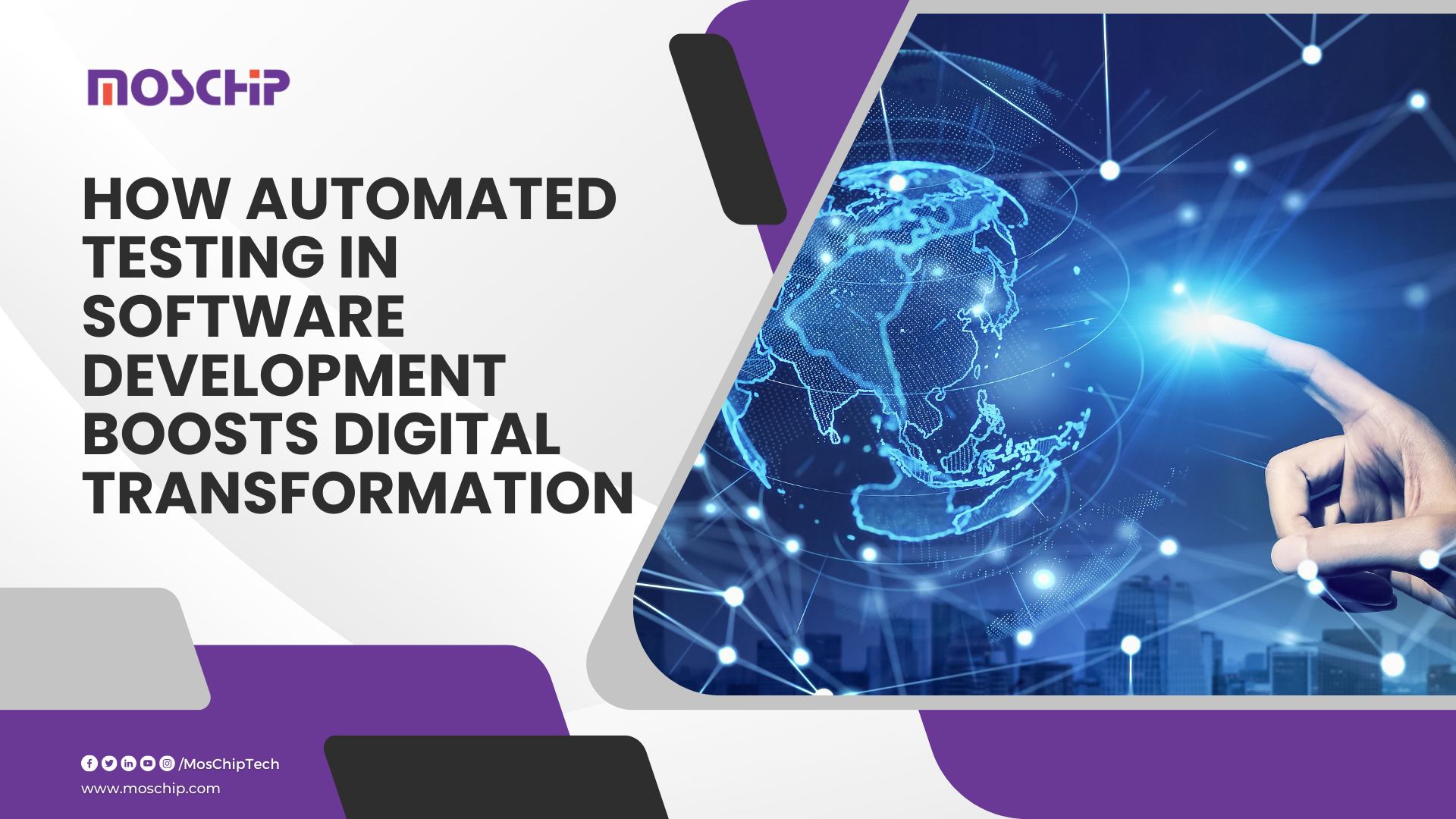Home » Blog » Blog » Quality & Automation Engineering » How automated testing in software development boosts Digital Transformation
How automated testing in software development boosts Digital Transformation
Software development has become a crucial component of digital transformation in the digital landscape, and we have witnessed it has become a necessity in every industry from healthcare to finance manufacturing. Digital transformation involves accumulating digital technologies in all aspects of business operations. In digital transformation, software development is important in operating and streamlining processes, leveraging software applications, cloud computing, Artificial Intelligence, and other cutting-edge technologies. Automated testing has also gained traction with the increase in digital technologies. According to Fortune Business Insights, the global market for automation testing was valued at USD 15.339 billion in 2023, and it is estimated to reach USD 17.71 billion in the year 2024. During the forecast period, the market is expected to grow rapidly, reaching USD 69.85 billion by the year 2032, with a Compound Annual Growth Rate (CAGR) of 18.7%.
Why is Automated Testing Needed for Digital Transformation?
The digital transformation requires a fast software development and deployment to meet customer demands. While manual testing is essential it is time-consuming, susceptible to errors, and cannot match up with the accelerated delivery cycles required in a digitally transformed environment. Automated testing addresses these challenges by streamlining testing processes, enabling faster feedback, and enhancing overall software quality. It allows one to release software updates more frequently and consistently, improving the continuous integration and continuous delivery (CI/CD) pipelines required for digital transformation programs.


Automated testing in digital transformation
Benefits of automated testing in digital transformation The several benefits of automated testing plays in Digital transformation are as follows:- Faster time to market: Automated testing may significantly reduce the testing time, allowing one to bring new features and changes to operations faster. This is critical in continuously changing the digital landscape where speed and agility are important for staying competitive.
- Better quality: Automated tests may be run consistently and repeatedly, ensuring that software programs comply with the quality standards that are needed. This helps to detect and address concerns early in the development phase, reducing the possibility of major post-deployment errors.
- Continuous Integration and Delivery: Automated testing is an essential component of effective Continuous Integration (CI) and Continuous Deployment (CD) pipelines. One needs to establish seamless integration and deployment pipelines by automating the testing process, making the software development lifecycle more agile and responsive.
- Increased test coverage: Automated testing allows for the execution of a broader range of test scenarios, including those that are difficult to execute manually. This wide test coverage helps in identifying and addressing a wider range of potential errors, improving the overall quality of the software.
- Improved transparency: Automated testing results are easily shared and integrated into the development process, resulting in improved communication between the development, testing, and operations teams. This transparency can also help in identifying bottlenecks and optimizing the overall software development lifecycle.
- Regression testing: This approach ensures that new features or changes introduced during digital transformation efforts do not negatively impact existing functionalities. This approach helps in maintaining the stability and reliability of the software.
- Unit test: Unit testing is a crucial component in developing stable and maintainable software solutions for digital transformation projects. It checks the behavior of individual code components.
- Smoke testing: This approach quickly validates the application’s basic functioning after each build, providing immediate input on whether additional testing is required. This technique enables quick iterations and deployments, which are essential in digital transformation.
- API and Integration tests: To validate the interactions and integrations between different components, services, and systems, this approach ensures seamless communication and interoperability. This is critical for digital transformation initiatives that involve complex architectures and ecosystems.
- User interface testing: It guarantees that the application’s user interface works as intended, offering a fluid and easy user experience, which is important in promoting user adoption and satisfaction in digital transformation projects.
- Input and output testing: This testing evaluates input data processing and output data production, ensuring data accuracy, dependability, and integrity. This is critical for data-driven digital transformation efforts.
- Security tests: Security testing looks at the software application’s security posture, identifying and preventing possible threats and vulnerabilities, protecting confidential information, and ensuring compliance with security standards and regulations that are essential for secure digital transformation.
- Performance tests: This method evaluates the performance and scalability of the application under various conditions, helping optimize resource utilization, enhance user experience, and ensure the application can handle the increased workload and traffic associated with digital transformation.
- Acceptance tests: This approach verifies that the software meets the specified requirements and acceptance criteria, ensuring alignment with business objectives and user expectations. It validates the success of digital transformation initiatives in delivering value to stakeholders.
Author
-
Ambuj is a Marketing professional at MosChip creating impactful techno-commercial writeups and conducting extensive market research to promote businesses on various platforms. He has been a passionate marketer for more than three years and is constantly looking for new endeavours to take on. When He’s not working, Ambuj can be found riding his bike or exploring new destinations.







